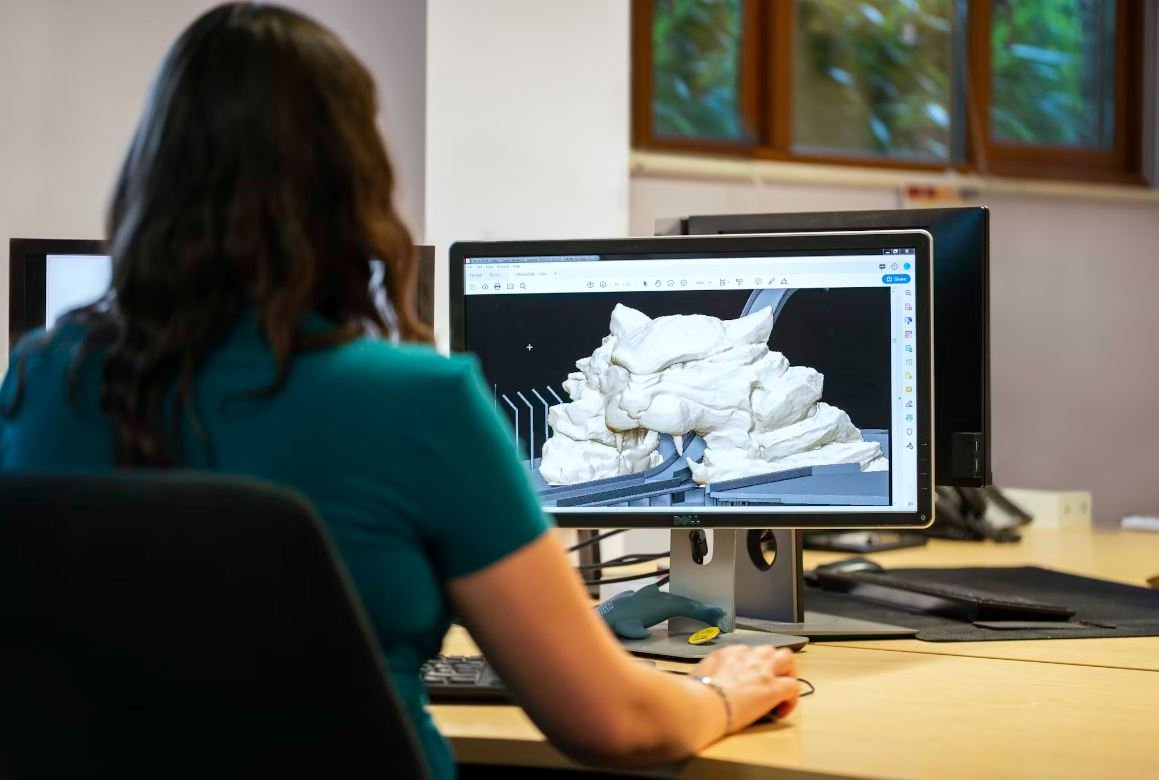The Rise of Deepfake Articles: What You Need to Know
With the advancement of artificial intelligence technology, the creation of deepfake articles has become more prevalent in today’s digital landscape. Deepfake refers to the manipulation of audio, video, or even written content that is convincingly deceptive, often presenting fictional information as factual.
Key Takeaways:
- Deepfake articles leverage AI technology to create deceivingly realistic content.
- They pose a significant threat to misinformation and trustworthiness of online information.
- Educating oneself about deepfake articles is crucial to maintaining digital literacy.
Understanding Deepfake Articles
Typically, deepfake articles are created using natural language processing algorithms powered by deep learning models. These models analyze vast amounts of text data to train themselves to generate new content in a specific style or mimic a particular author’s voice. The result is fabricated articles that appear genuine and can easily fool readers.
**Deepfake articles** have the potential to spread **disinformation** and influence public opinion on various topics. In our hyperconnected world, it is crucial for online users to develop a critical eye when consuming information, verifying sources, and cross-referencing facts. *Being aware of the existence and methods behind deepfake articles can help protect and foster an informed society.*
The Impact of Deepfake Articles
The consequences of deepfake articles are far-reaching, affecting individuals, organizations, and society as a whole. Misinformation can lead to public distrust, manipulate public sentiment, and even have political consequences. Identifying and countering deepfake articles has become a significant challenge for platforms and fact-checking organizations.
It is important to note that not all deepfake articles have malicious intent. Some may be created for entertainment purposes or as an experiment to demonstrate the capabilities of AI technology. This duality makes it even more crucial for consumers to be able to differentiate between genuine and fabricated content.
Combatting Deepfake Articles
As the threat of deepfake articles continues to grow, various strategies are being employed to combat their influence and mitigate their impact:
- **Digital literacy education**: Promoting critical thinking and media literacy skills can empower individuals to detect and question the authenticity of content they encounter online.
- **Fact-checking**: Fact-checking organizations play a vital role in debunking false information and raising awareness about deepfake articles.
- **Technological solutions**: AI tools and algorithms are being developed to identify and flag potential deepfake articles, helping to combat their dissemination.
The Future of Deepfake Articles
“Only time will tell how the deepfake landscape will evolve and shape the future of digital content.”
Researchers are actively working on improving detection methods and developing techniques to create countermeasures against deepfake articles. Governments are also exploring legislation to regulate the creation and distribution of deepfake content. With rapid advancements in technology, it is crucial for society to adapt, remain vigilant, and stay informed.
| Topic | Description |
|---|---|
| Political Scandals | Articles spreading false information about politicians and public figures. |
| Healthcare | Fabricated articles with misinformation about medical breakthroughs and treatments. |
| Technology | False reports on emerging technologies and their potential impact. |
| Strategy | Description |
|---|---|
| Source Verification | Verifying the credibility and reputation of the publisher. |
| Fact-Checking | Using fact-checking organizations to verify claims made in the article. |
| Language Analysis | Identifying patterns or inconsistencies in the language used within the article. |
| Impact | Description |
|---|---|
| Misinformation | False or misleading information being spread to deceive readers. |
| Public Trust | Erosion of trust in online sources and authoritative figures. |
| Social Polarization | Deepfake articles influencing public sentiment and causing divisions among individuals and communities. |

Common Misconceptions
Paragraph 1: Deepfake technology is only used for malicious purposes
One common misconception people have about deepfake technology is that it is only used for malicious purposes. While it is true that deepfakes can be used to create fake videos or images for harmful activities such as spreading misinformation or defaming someone, there are legitimate uses for this technology as well.
- Deepfake technology can be used in the entertainment industry to create realistic special effects and enhance visual storytelling.
- It has the potential to be used in the field of education to provide immersive learning experiences and historical reenactments.
- Deepfakes can also be used as creative tools for artists and filmmakers, enabling them to explore new possibilities in their respective mediums.
Paragraph 2: Deepfakes are always easy to identify
Another misconception is that deepfakes are always easy to identify. While some deepfake videos or images may be poorly executed and contain obvious flaws, there are sophisticated deepfakes that are nearly indistinguishable from genuine content.
- Synthetic media generated using advanced machine learning techniques can replicate human expressions, speech patterns, and visual details with remarkable accuracy.
- Deepfake creators constantly refine their methods to make their creations more convincing, making it challenging for the average person to detect them without specialized tools or expertise.
- Detection methods and technologies are being developed to combat deepfakes, but it remains an ongoing cat-and-mouse game between creators and experts.
Paragraph 3: Deepfakes can only be used for impersonation
Many people assume that deepfakes can only be used for impersonation, where someone’s face is convincingly mapped onto another person’s body in a video. While impersonation is indeed a common use of deepfake technology, it is not the only one.
- Deepfake technology can be used to alter the appearance of individuals in videos without the intent to deceive, such as changing an actor’s age or enhancing their makeup effects.
- It can also be used to bring historical figures or fictional characters to life by animating old photographs or paintings.
- Deepfakes can be employed to generate synthesized speech or translate audio into different languages, serving as a tool for accessibility and language learning.
Paragraph 4: Deepfake technology is impossible to control or regulate
There is a widespread belief that deepfake technology is impossible to control or regulate, leading to skepticism about efforts to combat its negative implications. However, while the challenges are indeed significant, it is not accurate to say that deepfakes cannot be controlled or regulated.
- Increased awareness about the existence and potential dangers of deepfakes can help individuals be more cautious and critical when consuming online content.
- Technological advancements in detection methods and authenticity verification can assist in identifying deepfakes.
- Legal frameworks and regulations can be put in place to hold those responsible for malicious deepfakes accountable and deter their creation and dissemination.
Paragraph 5: Deepfake technology is too complex for the average person to understand
Lastly, many people believe that deepfake technology is too complex for the average person to understand, which might make it seem like an insurmountable issue. While the technical aspects of deepfake creation can indeed be complex, acquiring a basic understanding of how deepfakes work is within reach for most individuals.
- Online resources and educational initiatives can help raise awareness and provide information about deepfake technology, its risks, and the need for critical thinking when consuming media.
- By understanding the underlying principles and techniques used in deepfake creation, individuals can better identify potential signs of manipulation.
- Collaboration between experts, industry, and policymakers can contribute to developing user-friendly tools and guidelines that empower individuals to protect themselves against the negative effects of deepfakes.

Deepfake Articles Make the Internet VERY INTERESTING to read
Deepfake technology has become increasingly prevalent and sophisticated, leading to growing concerns regarding the spread of disinformation and digital manipulation. With the ability to convincingly alter videos and images, separating fact from fiction has become even more challenging for online users. In this article, we explore ten examples of deepfake related incidents that shed light on the impact it has on various aspects of our lives.
1. Celebrity Impersonations
One area greatly impacted by deepfake technology is celebrity impersonations. Through the manipulation of visuals and audio, deepfakes can create convincing videos that appear to be celebrities saying or doing things they never actually did.
2. Political Fake News
Deepfake technology has been misused to create false political videos, spreading disinformation and influencing public opinion. These fabricated videos pose a significant threat to the integrity of democratic processes and public trust in the media.
3. Criminal Activities
Deepfakes have been used for criminal activities, such as creating fake identities for illicit purposes. By forging realistic images and videos, criminals can deceive individuals and authorities, making it even more challenging to catch them.
4. Revenge Porn
A disturbing consequence of deepfake technology is the creation of non-consensual pornography. Through the use of manipulated images or videos, individuals are targeted and their intimate moments exploited without their consent.
5. Historical Revisionism
Deepfakes can also distort historical records, allowing for the manipulation of archival footage or photographs. This presents a risk to the preservation of accurate historical events and can contribute to the spread of false narratives.
6. Misrepresentation in Advertising
Deepfake technology has been utilized to misrepresent products or services in advertisements. By creating false endorsements using well-known personalities, companies can deceive consumers and undermine trust in marketing.
7. Educational Misinformation
Deepfakes have the potential to impact education by disseminating false information. From altering scientific experiments to modifying historical speeches, deepfakes can mislead students and hinder the learning process.
8. Manipulation of Evidence
The credibility of evidence in legal proceedings can be compromised due to deepfake technology. By creating manipulated videos or photos, perpetrators can cast doubt on the authenticity of key evidence, potentially leading to a miscarriage of justice.
9. Impersonating Service Providers
Deepfakes can be used to impersonate individuals working in essential service industries. This can result in fraudulent activities and harm the reputation and trustworthiness of legitimate professionals.
10. Cultural and Political Satire
While deepfakes have negative implications, they can also be used for cultural and political satire. By creating parody videos or images, artists and comedians can use deepfake technology to express social commentary and entertain audiences.
As deepfake technology continues to advance, it is crucial for society to develop methods to detect and combat misinformation. A multidisciplinary approach involving technology, law enforcement, and education is necessary to ensure the responsible use of this powerful technology. By understanding the potential consequences and staying vigilant, we can navigate the increasingly complex landscape of the internet with greater awareness and critical thinking.
Frequently Asked Questions
What are deepfakes?
What are deepfakes?
Deepfakes are synthetic media, typically videos, that use deep learning algorithms to manipulate and replace the faces or voices of people in order to create realistic but fake content.
How are deepfakes created?
How are deepfakes created?
Deepfakes are created using machine learning techniques, specifically deep neural networks, which are trained with large datasets of images and videos to learn how to generate convincing imitations of a person’s appearance and speech.
What are the potential risks of deepfakes?
What are the potential risks of deepfakes?
Deepfakes can be used for malicious purposes, such as spreading misinformation, damaging a person’s reputation, or creating deceptive content for scams or fraud. They can also undermine trust in media and make it harder to distinguish between real and fake content.
How can deepfakes be detected?
How can deepfakes be detected?
Deepfakes detection methods typically involve analyzing inconsistencies, artifacts, or abnormal patterns in the generated content. Techniques such as forensic analysis, facial landmark tracking, and deep learning algorithms can be used to identify signs of manipulation.
Are there any regulations or laws against deepfakes?
Are there any regulations or laws against deepfakes?
Several countries have started to introduce or consider legislation against deepfakes. These laws often focus on the malicious use of deepfakes for non-consensual pornography, political manipulation, or fraud. However, the legal frameworks are still evolving to keep up with this rapidly advancing technology.
Can deepfakes be used for positive purposes?
Can deepfakes be used for positive purposes?
While deepfakes have primarily raised concerns, they can also have potential positive applications. For example, they can be used in the entertainment industry for special effects, to revive historical figures in educational contexts, or to assist individuals with disabilities in communication.
How can individuals protect themselves from deepfakes?
How can individuals protect themselves from deepfakes?
To protect themselves from potential harm caused by deepfakes, individuals can be cautious about sharing personal information online, verify the authenticity of content before believing or sharing it, and stay informed about the latest deepfake detection technologies.
Who is responsible for addressing the issue of deepfakes?
Who is responsible for addressing the issue of deepfakes?
Addressing the issue of deepfakes requires collaborative efforts from various stakeholders. This includes technology companies developing detection tools, legislators enacting appropriate laws, educators raising awareness, and individuals exercising critical thinking and media literacy.
Are there any ongoing research efforts to combat deepfakes?
Are there any ongoing research efforts to combat deepfakes?
Yes, there are ongoing research efforts to develop robust deepfake detection methods and mitigate the risks associated with this technology. Researchers are exploring techniques such as adversarial learning, blockchain, and watermarking to enhance authenticity verification and counteract deepfake proliferation.
What can I do if I become a victim of a deepfake?
What can I do if I become a victim of a deepfake?
If you become a victim of a deepfake, you should consider taking legal actions if applicable, report the incident to relevant authorities, and seek assistance from experts who specialize in deepfake forensics and mitigation. Documenting and collecting evidence is crucial in addressing the issue effectively.




